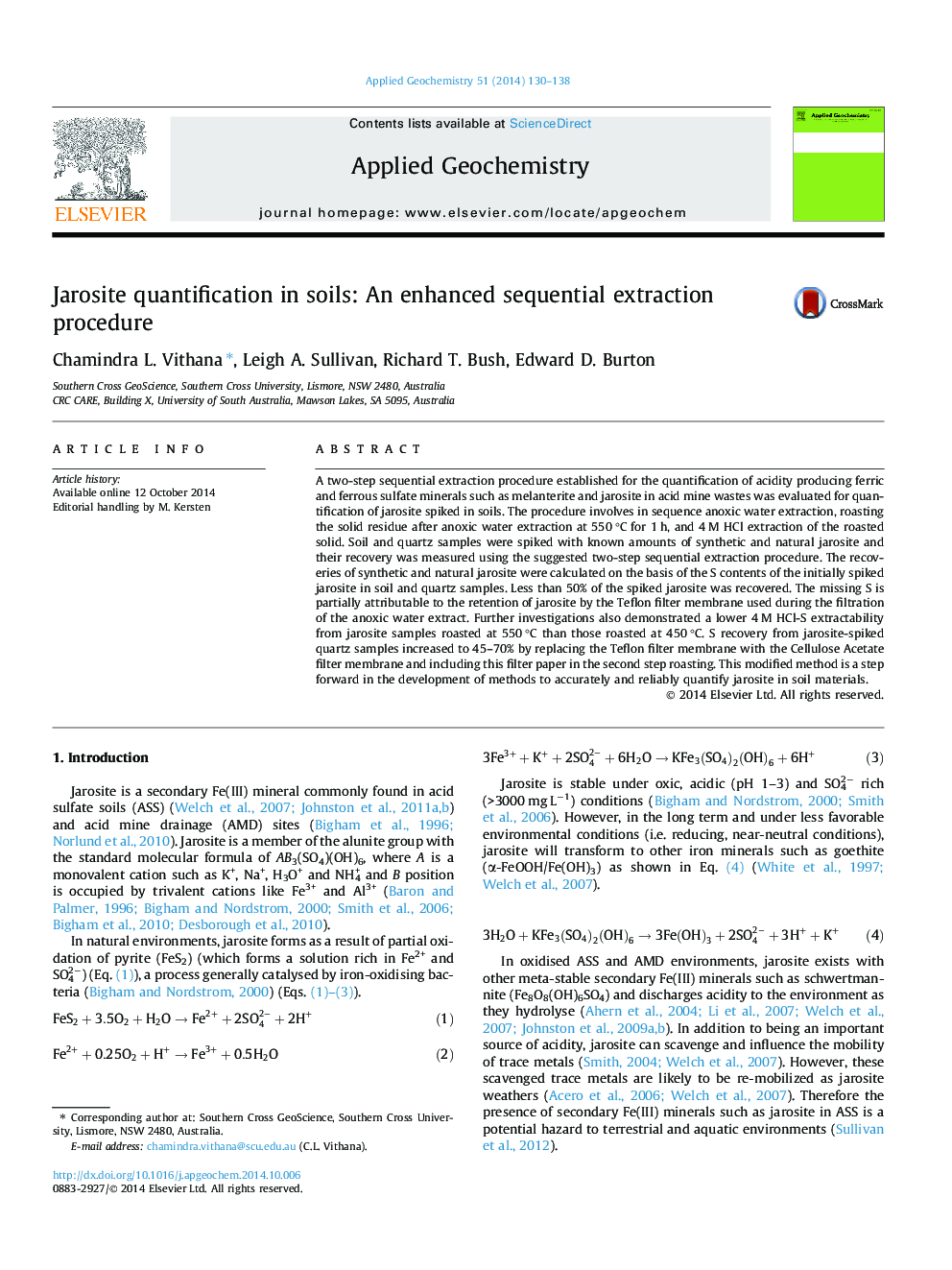| Article ID | Journal | Published Year | Pages | File Type |
|---|---|---|---|---|
| 6335098 | Applied Geochemistry | 2014 | 9 Pages |
Abstract
A two-step sequential extraction procedure established for the quantification of acidity producing ferric and ferrous sulfate minerals such as melanterite and jarosite in acid mine wastes was evaluated for quantification of jarosite spiked in soils. The procedure involves in sequence anoxic water extraction, roasting the solid residue after anoxic water extraction at 550 °C for 1 h, and 4 M HCl extraction of the roasted solid. Soil and quartz samples were spiked with known amounts of synthetic and natural jarosite and their recovery was measured using the suggested two-step sequential extraction procedure. The recoveries of synthetic and natural jarosite were calculated on the basis of the S contents of the initially spiked jarosite in soil and quartz samples. Less than 50% of the spiked jarosite was recovered. The missing S is partially attributable to the retention of jarosite by the Teflon filter membrane used during the filtration of the anoxic water extract. Further investigations also demonstrated a lower 4 M HCl-S extractability from jarosite samples roasted at 550 °C than those roasted at 450 °C. S recovery from jarosite-spiked quartz samples increased to 45-70% by replacing the Teflon filter membrane with the Cellulose Acetate filter membrane and including this filter paper in the second step roasting. This modified method is a step forward in the development of methods to accurately and reliably quantify jarosite in soil materials.
Related Topics
Physical Sciences and Engineering
Earth and Planetary Sciences
Geochemistry and Petrology
Authors
Chamindra L. Vithana, Leigh A. Sullivan, Richard T. Bush, Edward D. Burton,
